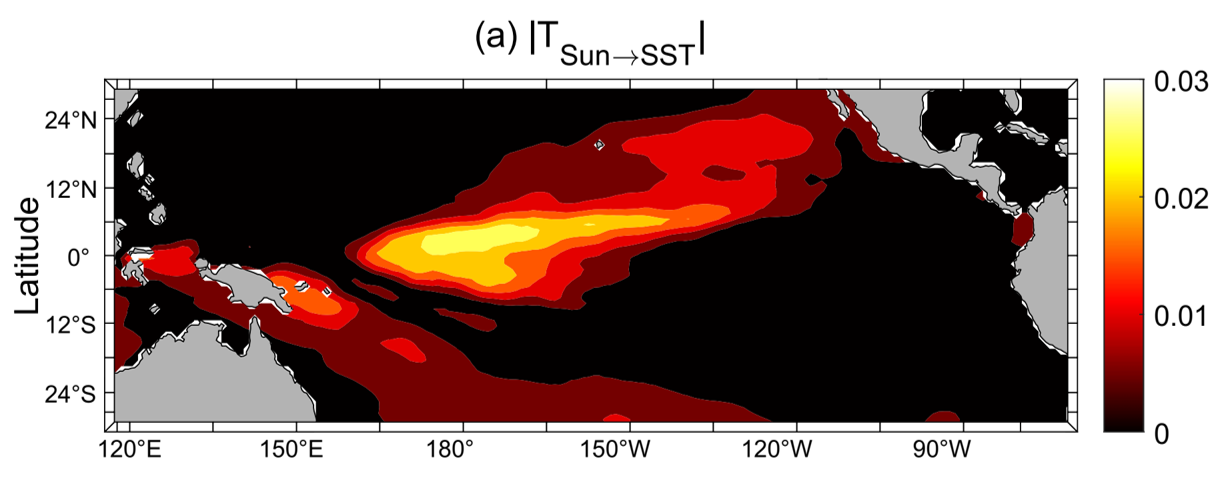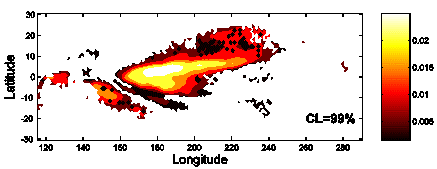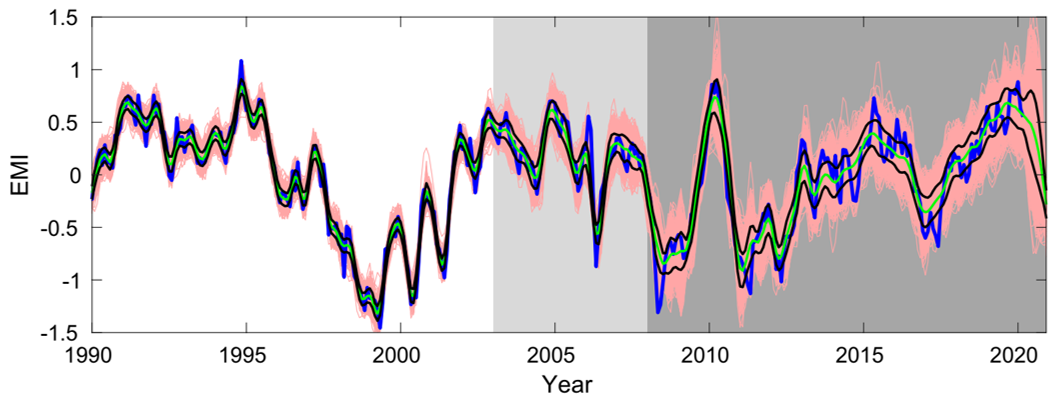News
As the strongest interannual signal in the global climate system, El Niño-Southern Oscillation (ENSO) has been linked to hazards such as flooding, drought, heat wave, freezing weather, etc., in far-flung regions of the globe. An accurate prediction of ENSO hence helps make decisions in agriculture, hydrology, public health, energy, and many other sectors of our society. El Niño prediction now has been a routine practice in operational centers all over the world.
So far the longest lead time of forecasting is about 1-2 years, but still with much uncertainty. An example is the 2014-2016 “Monster El Niño”; essentially all models fell off the mark. Now it is believed that, the failure of the forecasts is due to a new type of El Niño, namely, El Niño Modoki or Central Pacific El Niño (CP ENSO). In the past years, people had focused mostly on the canonical El Niño, i.e., the Eastern Pacific El Niño (EP ENSO), more or less ignoring the CP ENSO. Reportedly this new type of El Niño is much more difficult to predict than the canonical type, hampering the progress of ENSO prediction.
Recently, a breakthrough is made in this regard. In a paper entitled “El Niño Modoki can be mostly predicted more than 10 years ahead of time”, scientists from China’s Fudan University, Nanjing Center for Ocean and Atmosphere Dynamical Studies, and Shanghai Andrew C. Yao Institute of Artificial Intelligence found that El Niño Modoki may be far more predictable than conceived before. Using the theory of predictability transfer or Liang-Kleeman information flow (IF) from first principles, and the IF-based quantitative causality analysis, they found that the solar activity 22-25 years ago is linked to the sea surface temperature (SST) anomaly in the Central Pacific, and the causal pattern resembles to the structure of El Niño Modoki; moreover, the highest resemblance is attained at a lag of 45 years (Figures 1 & 2). Based on this observation, they concluded that certain time-delayed time series of sun spot numbers (SSN) must span the function space where the El Niño Modoki index lies. Using the IF-based causal AI technique this index can be well predicted at a lead time of more than 10 years (Figure 3). Of course, the IF varies with time, and hence during different stages the function space may vary; the lead time in the future may become shorter or longer, depending on the varying causality. Notice that the past decades have seen much frequent occurrences of El Niño Modoki than before; particularly in the decade of 2000-2010, when 3 events occurred. While the high occurrence has been attributed to global warming, the authors found that this is more likely due to the most vigorous solar activity some 45 years ago (1955-1965).

Figure 1 (Fig. 1a in the article). The absolute rate of information flowing from the delayed (by 45 years) series of sunspot numbers to those of the sea surface temperature in the Pacific Ocean (in nats/months).


Figure 2 (Fig. S3b in the supplementary material). As
Figure 1a, but shown is only the information flow significant at a 99%
confidence level. The significance test is performed using surrogates generated
with the AR(1) noise model.
Just as a referee said, the result is “absolutely astounding,” “breathtaking and counterintuitive.” Indeed, compared to the present wisdom, the lead and accuracy of the prediction are really striking, as demonstrated in Figure 3.

Figure 3 (Fig. 5 in the article). The IF-based AI prediction of the ENSO Modoki index. The part after 2008 (dark shaded) is the predicted. In the figure, the blue line indicates the observed index, the pink lines mark the 1000 predictions, and the green line is the mean of the predictions.
The paper has been published in Scientific Reports on September 9, 2021. The citation is as follows:X.S. Liang, F. Xu, Y. Rong, R. Zhang, X. Tang, F. Zhang, 2021: El Niño Modoki can be mostly predicted more than 10 years ahead of time. Scientific Reports, 11:17860. DOI:10.1038/s41598-021-97111-y. [pdf]